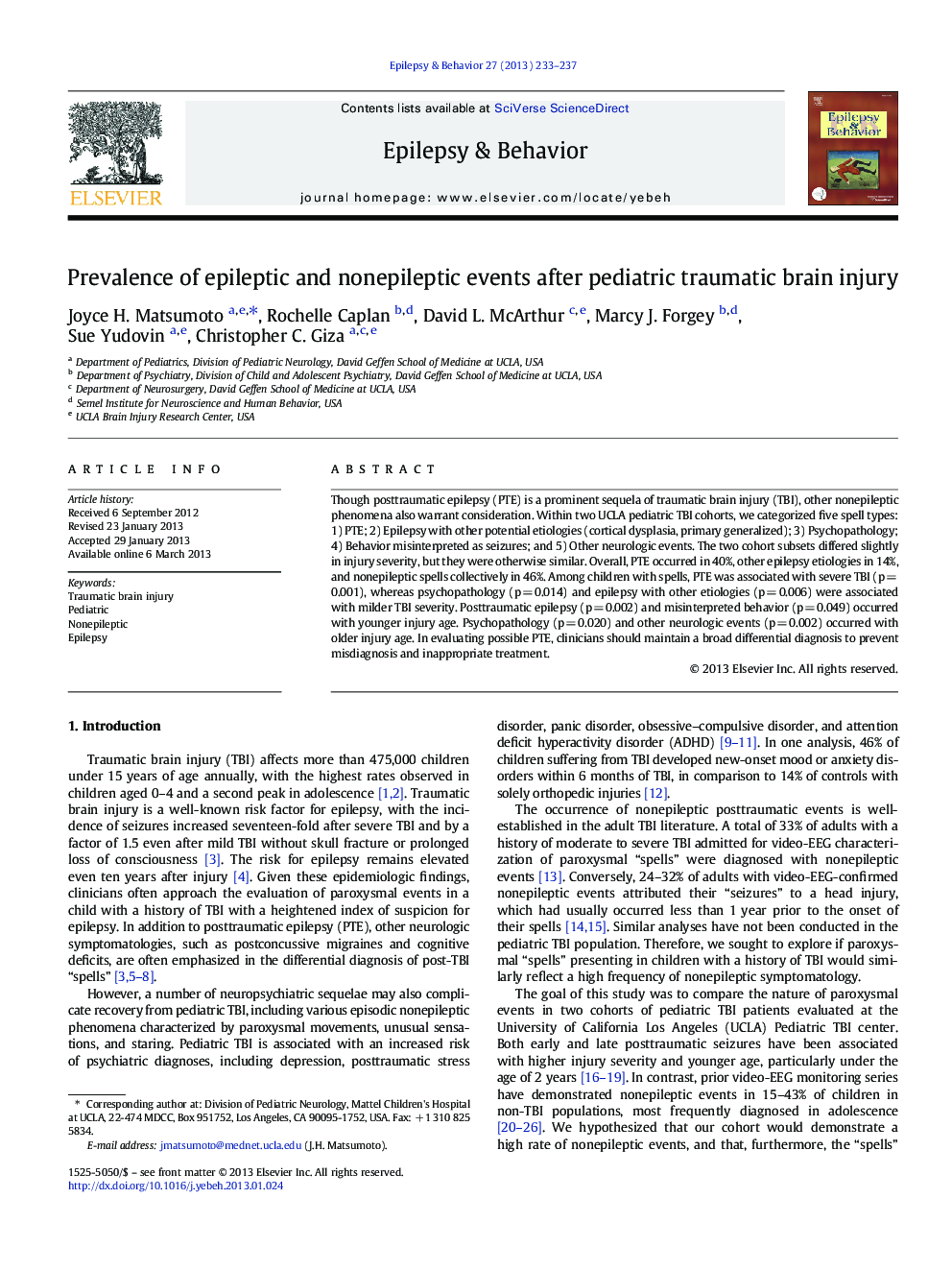| کد مقاله | کد نشریه | سال انتشار | مقاله انگلیسی | نسخه تمام متن |
|---|---|---|---|---|
| 6013238 | 1185910 | 2013 | 5 صفحه PDF | دانلود رایگان |
Though posttraumatic epilepsy (PTE) is a prominent sequela of traumatic brain injury (TBI), other nonepileptic phenomena also warrant consideration. Within two UCLA pediatric TBI cohorts, we categorized five spell types: 1) PTE; 2) Epilepsy with other potential etiologies (cortical dysplasia, primary generalized); 3) Psychopathology; 4) Behavior misinterpreted as seizures; and 5) Other neurologic events. The two cohort subsets differed slightly in injury severity, but they were otherwise similar. Overall, PTE occurred in 40%, other epilepsy etiologies in 14%, and nonepileptic spells collectively in 46%. Among children with spells, PTE was associated with severe TBI (p = 0.001), whereas psychopathology (p = 0.014) and epilepsy with other etiologies (p = 0.006) were associated with milder TBI severity. Posttraumatic epilepsy (p = 0.002) and misinterpreted behavior (p = 0.049) occurred with younger injury age. Psychopathology (p = 0.020) and other neurologic events (p = 0.002) occurred with older injury age. In evaluating possible PTE, clinicians should maintain a broad differential diagnosis to prevent misdiagnosis and inappropriate treatment.
⺠We assessed seizure-like events in 2 pediatric traumatic brain injury (TBI) cohorts. ⺠Nonneurologic events represented one-quarter of spells presenting for evaluation. ⺠54% of the spells were epileptic, but other epilepsy etiologies were found in 26% of these. ⺠Posttraumatic epilepsy was associated with severe TBI and younger injury age. ⺠Paroxysmal events in children after TBI cannot be presumed to represent PTE.
Journal: Epilepsy & Behavior - Volume 27, Issue 1, April 2013, Pages 233-237
